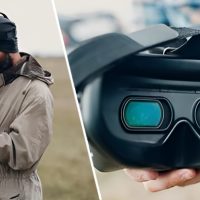If you’re anything like me when I first started diving into the drone universe, you’re probably brimming with curiosity and bursting with questions. One hot inquiry that kept me up at night when I bought my first drone was, “Can a drone fly in winds?” I scoured the web, consulted forums, and conducted my experiments to find the answers. Armed with knowledge and experience, I’m here to share my findings with you.
Can a drone fly in the winds?

Drones can fly in winds, but the specific wind speed and the drone’s capabilities are crucial factors. Most consumer drones can handle winds up to 20-25 miles per hour (32-40 kilometers per hour) without much trouble.
However, it’s important to note that wind speed affects different drone models differently, and some advanced drones can withstand higher wind speeds.
To provide a better understanding, let’s consider an example. If a drone has a maximum speed of 30 miles per hour (48 kilometers per hour) and the wind speed is 15 miles per hour (24 kilometers per hour), the drone can fly against the wind comfortably.
However, if the wind speed exceeds the drone’s maximum speed, it may struggle to maintain stability and control.
Can a drone fly in strong winds?

Drones can fly in strong winds. Drones can handle winds up to 20-25 miles per hour, but flying in stronger winds can be challenging and risky. In such conditions, it’s advisable to exercise caution and avoid pushing your drone to its limits.
It is recommended to avoid flying a drone when wind speeds reach or exceed 30 miles per hour. At this speed, strong gusts can impact your drone’s stability and also compromise its ability to maintain control, potentially leading to accidents.
Can wind flip a drone?
A strong wind can flip a drone under certain circumstances. Drones are designed to be stable and resistant to winds; excessive gusts can overpower their motors and control systems. The specific wind speed at which a drone can be flipped depends on various factors, including the drone’s size, weight, and aerodynamic design.
It is advised to take caution and avoid flying a drone during high-speed winds for a safer flight experience and to reduce the risk of the drone flipping or losing control.
Can a drone fly in a storm?
It is not recommended to fly a drone in a storm. Storms involve strong winds, heavy rain, and unpredictable weather conditions, which can pose significant risks to drone flight.
Strong winds can cause the drone to lose control, heavy rain can damage sensitive electronic components, and lightning can pose a safety hazard. It is best to wait for the storm to pass and fly the drone in safe weather conditions.
Can DJI drones fly in the wind?
DJI drones can handle moderate wind conditions. Most DJI drones, such as the Mavic series and Phantom series, have wind resistance capabilities that allow them to fly in winds up to 25 miles per hour.
What should you do if a drone goes in a strong wind?
If you find yourself flying a drone in strong winds, here are some guidelines and recommendations to help you handle the situation.
- Keep a close eye on your drone and the wind conditions. Stay focused and attentive throughout the flight.
- Strong winds are often more intense at higher altitudes. Descending to a lower altitude can reduce the impact of the wind and improve stability.
- Adjust your flight path to fly in the same direction as the wind. It can help prevent the drone from being pushed or carried away.
- Flying at lower speeds and avoiding sudden maneuvers can enhance stability and reduce the risk of losing control in strong winds.
- Some drones have a sports mode that increases their responsiveness and agility. Activating sport mode provides better control and stability in windy conditions.
- Be mindful of obstacles, people, and structures around you. Maintain a safe distance to prevent any potential collisions or damage caused by gusts.
- If the wind becomes too strong or uncontrollable, it’s best to land the drone safely and end the flight. Don’t take unnecessary risks.
- Flying in strong winds can drain the drone’s battery faster. Keep an eye on the remaining battery life and ensure you have enough power for a safe return.
Jose E. Johnson is a true tech prodigy whose lifelong passion for technology and gadgets has blossomed into remarkable drone expertise. From the moment he laid eyes on his first electronic toy as a child, Jose was captivated by the limitless possibilities of innovation. As he grew, so did his fascination with cutting-edge tech, leading him to become a bona fide drone expert. With an insatiable thirst for knowledge, Jose delved deep into the intricacies of drone technology, amassing a wealth of technical knowledge and hands-on experience. Now, he shares his wisdom through insightful drone reviews and invaluable tips for fellow enthusiasts, making him a trusted source in the drone community.







Leave a Reply